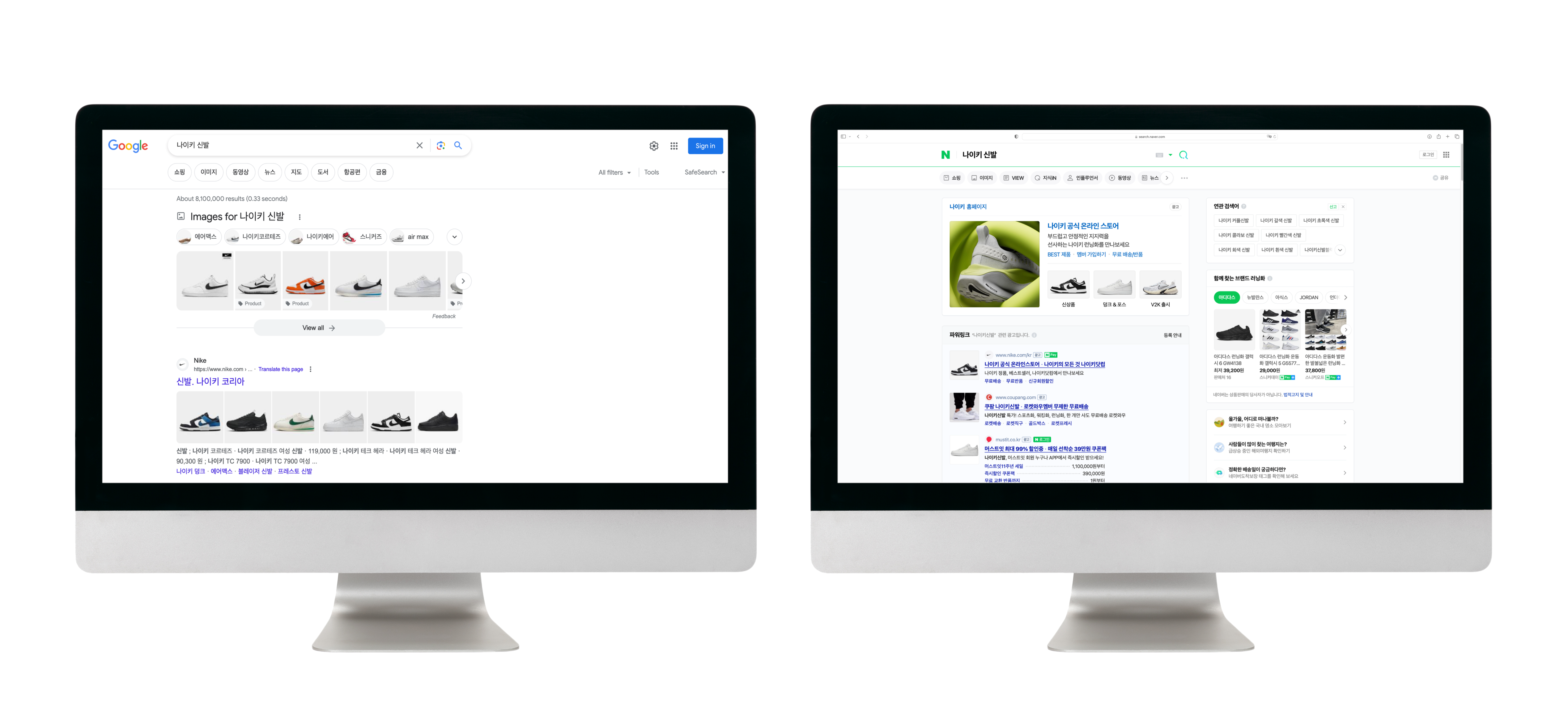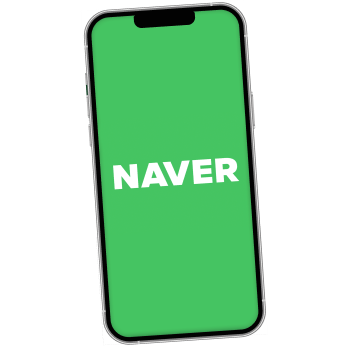Utilising Naver to increase visibility and traffic for a South Korean website is a very specialist approach to localised SEO, and although SEO best practices are still relevant, there are some unique opportunities to consider.
Naver is very distinct from Google, with its own features to navigate. Understanding the differences between the two platforms is key to boosting a site’s visibility in South Korea.
What is Naver?
Naver – pronounced as ‘nay-ver’, is the Korean version of Google, but with certain unique elements. Designed as a portal-style search engine, Naver neatly organises search results into categories: news, images, videos, shopping, video, music, and more.
Founded in 1999 by former Samsung professionals, Naver has solidified its position as Korea’s premier search engine. For businesses interested in the South Korean market, it is essential to become familiar with the platform.
Naver vs Google
SEO extends beyond just impressing Google, and it isn’t as simple as merely applying the same method to different search engines and expecting the same results.
interested in boosting its Korean-language traffic. Until that point, their strategy had exclusively revolved around Google.
We spoke to the client about the immense potential of Naver, highlighting the fact that they were missing out on over 25 million monthly searches with their current campaigns. As a result, they asked us to craft them a custom content blueprint for the platform.
Peeking into Naver’s SERPs
At a glance, Naver doesn’t look dissimilar to Yahoo, with a lively and packed homepage full of colourful images, animates banners and designated segments – a stark contrast to Google’s understated design.
However, the differences between Naver and Google go beyond just outward appearances. For example, when typing “나이키 신발” (Nike shoes) into both Naver.com and Google.co.kr, it is easy to spot the subtle variances in how search results are displayed. This demonstrates the importance of creating a bespoke strategy when targeting a South Korean audience using Naver.

Naver prioritises its own content above external resources, and it is often necessary to visit the second page of external results to find the first organic external link.
Naver utilises several distinct search divisions:
- Naver Blog: Showcases blog posts related to what users are searching for.
- Naver Café: Highlights discussions from online communities or forums related to the search.
- Shopping: Lists products, related to user queries, that are available for purchase.
- Kin (Knowledge iN): Provides answers to user questions from its vast knowledge base.
- Vibe (Music): Offers musical tracks and albums related to user-entered keywords.
Gaining Traction on Naver
Boosting your site’s visibility on Naver involves regularly posting across Naver Blogs, Cafés, and Knowledge iN. This can be done from your Naver profile or by collaborating with prominent Naver influencers to generate content for your brand (akin to link outreach for Google SEO). The platform has shown interest in further supporting bloggers, even green-lighting direct blog sales – a sharp contrast to Google’s stance on link purchases.
Regardless of your industry, regularly posting and engaging with your audience is key to Naver’s ranking metrics. Fluent Korean content is also non-negotiable to genuinely connect with local users.
Monitoring Success on Naver
Similar to Google’s Search Console, Naver offers Webmaster Tools for tracking your site’s performance. After adding a line of script to your site’s header, you can ensure Naver-specific requirements are met:
- Set up canonical URLs
- Eliminate duplicate content
- Address faulty redirects and fix broken URLs
- Make your site mobile-responsive
- Craft quality content
- Avoid generating spam
It is important to note that:
- Pages missing meta titles and descriptions won’t be indexed.
- Using text within images is frowned upon.
- Naver’s bots struggle with JavaScript, so its use should be minimised.
Localised SEO with Naver: What It Can Yield
Our client study demonstrated a 42% uptick in South Korean web traffic over a three-month Naver campaign. We collaborated with renowned Naver Power Bloggers, relevant to the client’s field, to create keyword-focused articles.
These articles connected with content on Naver Café and similar platforms, penned by our in-house Korean writers. The content boosted the client’s visibility on Naver, and external links directed users to the client’s primary pages, guiding a high-intent audience to the right places.
As a result, sales surged by 16%, unveiling a revenue stream that remained untapped before the introduction of a tailored Naver content strategy.
